
Sub
category index
|
|
All the badges of
Australia, NZ & Canada
|
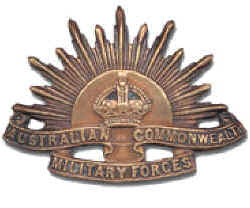
|
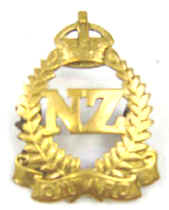
|
|
General Service
Hat Badges of the AIF and the NZEF
|
|
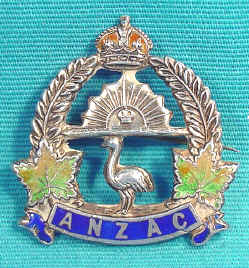
|


|
|
Origins &
details of these ANZAC "sweetheart" badges are unknown.
|
|
Canada |
|
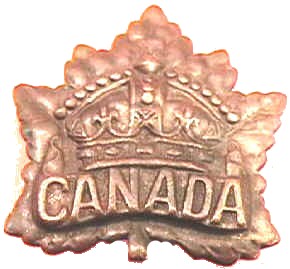 |
|
Although Canada
was never part of ANZAC there were many occasions, starting in the
Boer War and including Gallipoli, when they fought with or
alongside the Diggers. They have a very rich military badge
history that I try to pay tribute to here. Hat Badges from Canada |
-
There are hundreds of different badges,
symbols, emblems, guidons, TAC signs and the like in the history of the
Australian Armed Services and the NZ Forces.
There have been
four basic 'crown shapes' on British (and therefore Australian
& New Zealand) military badges, though there are variations
within each basic shape in the way they have been drawn.
|

|
The
(Imperial) State
Crown made for Queen
Victoria (c.1837). This is a square crown. The top is almost
flat, with just a suspicion of a dip in the centre. The State
Crown was often drawn in a weak, ill-defined style and later
illustrators, presumably imagining that it was a badly drawn St
Edward's crown, redrew it accordingly. |
| State Crown |
| (Q.
Victoria's
Crown) |
|
|

|
The Tudor
Crown (miscalled the King's Crown)
has a
rounded top. It was introduced by Edward VII in about 1902 and
was in use until the accession of Elizabeth II in 1953 when it
was replaced by St. Edwards crown.
There is no "Tudor
Crown" in real life. It is only an approved design, possibly
based on Queen Victoria's small diamond crown.
Image by T F Mills |
|
Tudor Crown |
|
(King's Crown) |
|
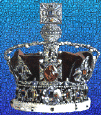
|
Imperial
(State) Crown, 1937
The present crown is about the tenth manifestation since
the Restoration. It was originally designed and made for Queen
Victoria in 1838 and was used at the coronations of all monarchs
since. It was remade with practically the same stones for
George VI in 1937. All monarchs wear the State Crown
and the St Edward's Crown at different times. |
|
Imperial Crown |
|
(Imp C) |
 |
St Edward's Crown (miscalled
the Queen's Crown). This
is similar to the State Crown of Queen Victoria's time, but with a much more
pronounced dip in the centre of the top. It is the crown used
for all coronations from King Charles II onwards (including the
coronation of Kings). All
monarchs wear the State Crown and the St Edward's Crown at
different times. image by T F Mills |
| St
Edward's Crown |
| (Queen's
Crown) |
More details on Crowns & Cyphers as used on badges & medals
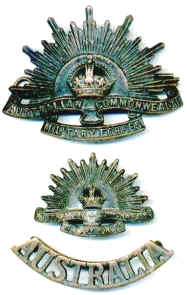
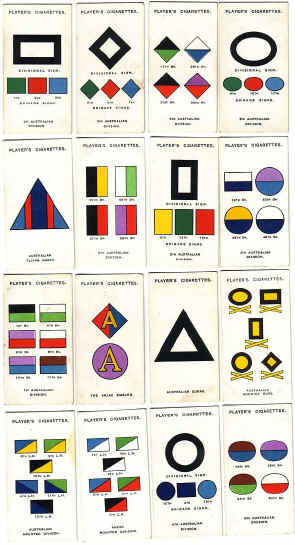
Many Diggers believed
that the Colour Patch was the most important badge they wore. All
the patches.
|
-
An Australian penny,
-
a
pressed penny slouch hat
brooch. c 1943-1945 Copper; gold plate and a
-
Victory badge made
from a penny (reverse side) which has been cut down, drilled out,
and filed-down, nickel plated.
This brooch
and Victory badge were made from
an Australian penny, the pre 1966 equivalent of 1 cent.
Australia used a
variation of the British Imperial monetary system with a farthing as one
quarter of a penny, a ha'penny as half a penny, 12 pennies to 1 shilling
and 20 shillings to 1 pound with 22 shillings to a guinea.
Copper coins were
the farthing, half penny, penny, with three pence, six pence, 1 shilling, florin
( 2 shillings) being 'silver'. Notes were paper and worth 10 shillings, 1 pound, 5 pound and 10 pound.
Servicemen were paid 6 shillings (6 bob) a day. That equates with 60
cents.
|
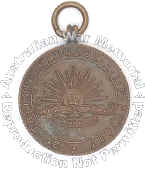
|
Bronze
medalet with small ring suspension. The obverse has the Rising Sun
badge in relief surrounded by the words '2ND TRAINING BRIGADE
A.I.F. FOVANT'. The reverse shows the words 'ANZAC DAY 1918' along
the top and the makers details along the bottom. The middle has
been engraved with 'DRILL 2ND PTE B.J. CONLIN (Conlon was correct
spelling) |
|

|